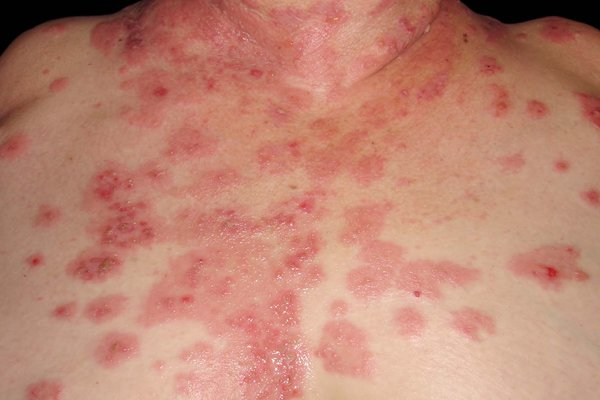What is Bullous Pemphigoid? This question likely puzzles many. It is a rare skin condition, mostly striking people over 60. If you’re living in India or elsewhere, gaining knowledge about this condition can help. This guide simplifies complex medical jargon. It’s crucial to know about this disorder for making informed healthcare decisions.
Bullous Pemphigoid is an autoimmune disorder. This means the body’s defense system mistakenly attacks healthy skin. This leads to itchy, uncomfortable blisters. Although it sounds serious, proper treatment can effectively manage it. Knowing this can be empowering. It encourages timely consultation with healthcare professionals, resulting in better management outcomes.
Understanding the basics of Bullous Pemphigoid, like its causes and symptoms, can bridge the gap between mystery and insight. Frankly, awareness can lead to early detection. Thus, the importance of knowledge cannot be underestimated.
Recognizing Bullous Pemphigoid: Symptoms and Diagnosis
Detecting Bullous Pemphigoid symptoms early makes a big difference. This condition often starts with itchiness, a harmless symptom many overlook. Soon, large blisters, often on the abdomen, thighs, and arms, appear. These blisters can be confused with those from other skin conditions and Chickenpox.
Accurate Bullous Pemphigoid diagnosis is vital. Confusion with other skin issues happens frequently, so it’s best to consult a healthcare professional specializing in skin – a dermatologist. Initial misdiagnoses aren’t uncommon, delaying treatment. Visiting a specialist streamlines the path to clarity and effective care.
Be aware of myths about Bullous Pemphigoid causes. It is not contagious. You can’t catch it by touching someone with it or sharing things like towels and clothes. This false belief may lead people to avoid those with the condition. Disproving this misconception fosters a supportive environment for those affected.
Common symptoms include: – Intense itching – Large, fluid-filled blisters without much redness – Skin peeling off easily – Potential crusting over blisters when they burst
Gaining accurate information distinguishes facts from myths. Clear knowledge facilitates better communication with professionals. This knowledge combats fear and misunderstanding.
Exploring Bullous Pemphigoid Treatment Options and Self-Care
Let’s dive into Bullous Pemphigoid treatment. Traditionally, treatments revolve around oral corticosteroids. These reduce inflammation and calm the immune system. But they sometimes come with unwelcome side effects, like weight gain or increased blood pressure. Polypharmacy, a mix of various medicines, might be a part of treatment to reduce individual medication side effects.
Nowadays, cutting-edge non-conventional therapies are making waves, especially in India. These target the immune system directly, offering hope with fewer side effects. Immunomodulators are one such innovation. They adjust the immune response without compromising overall health.
Non-drug treatments complement medication. They play an equally crucial role in managing long-term effects of Bullous Pemphigoid. A few tips for better self-care include:
- Gentle Skincare: Prioritize mild, fragrance-free soaps. Using moisturizers aids in soothing irritated skin.
- Lifestyle Changes: Eating nutrient-rich foods can bolster skin health. Stress management, too, helps. Consider yoga or meditation to keep stress levels low.
- Hygiene: Change and clean dressings on blisters regularly to prevent infections. Cleanliness supports skin recovery.
Developments in Bullous Pemphigoid treatment are exciting. They bring better quality of life without compromising comfort. Following advice from dermatologists and healthcare experts ensures the best possible care.
Understanding self-care strategies can significantly enhance daily life for those affected. These methods aren’t a replacement for professional treatment but a valuable addition. Peer support groups sometimes offer emotional relief. Sharing experiences with others living with Bullous Pemphigoid builds community strength.
Why Dermatologists Are Essential in Bullous Pemphigoid Management
Dermatologists are central to the management of Bullous Pemphigoid. They hold the key to controlling this skin condition effectively. Their role in diagnosis cannot be overstated. Dermatologists possess the necessary skill to clearly identify Bullous Pemphigoid causes and treatment paths.
Seeing a dermatologist improves prognosis. They customize treatments based on individual needs. This emphasis on individual care optimizes long-term effects of Bullous Pemphigoid on a patient’s quality of life.
Seeking expert guidance boosts confidence. It ensures patients receive up-to-date care grounded in research. This translates into improved daily living conditions for those affected. Taking control through education and expert advice is empowering.
Engagement with dermatologists makes a huge difference. They aid in regularly monitoring and adjusting treatments as necessary. This proactive approach leads to favorable outcomes. It makes living with Bullous Pemphigoid more manageable and less daunting.
In conclusion, understanding what is Bullous Pemphigoid and Bullous Pemphigoid diagnosis empowers individuals. Knowledge increases the likelihood of a fulfilling life, despite the disorder. Awareness is the first step towards overcoming challenges that living with Bullous Pemphigoid might entail.

